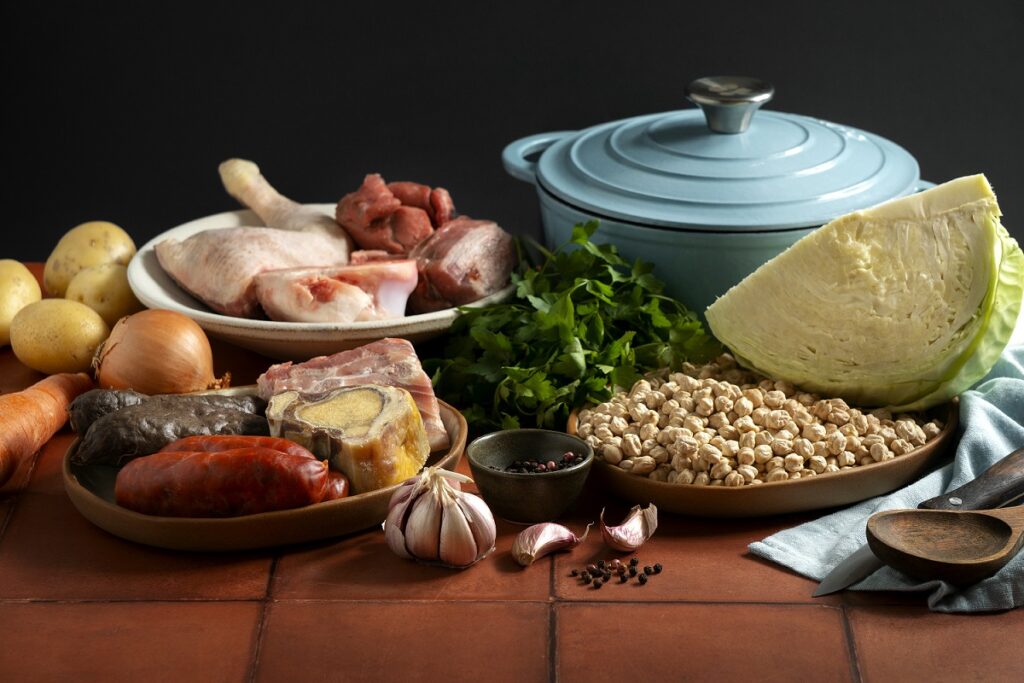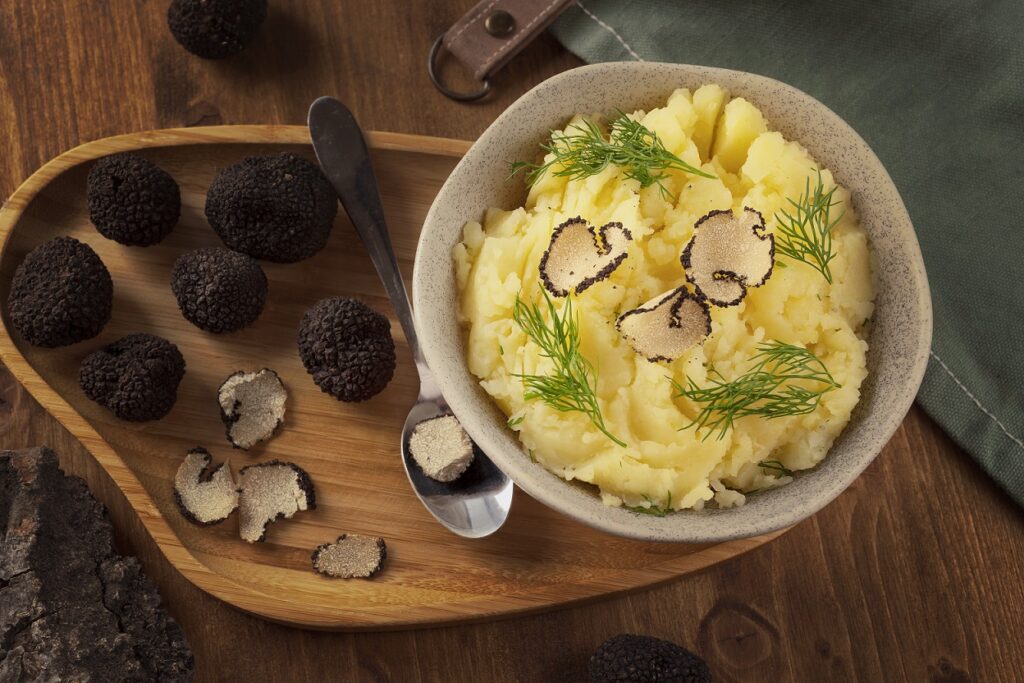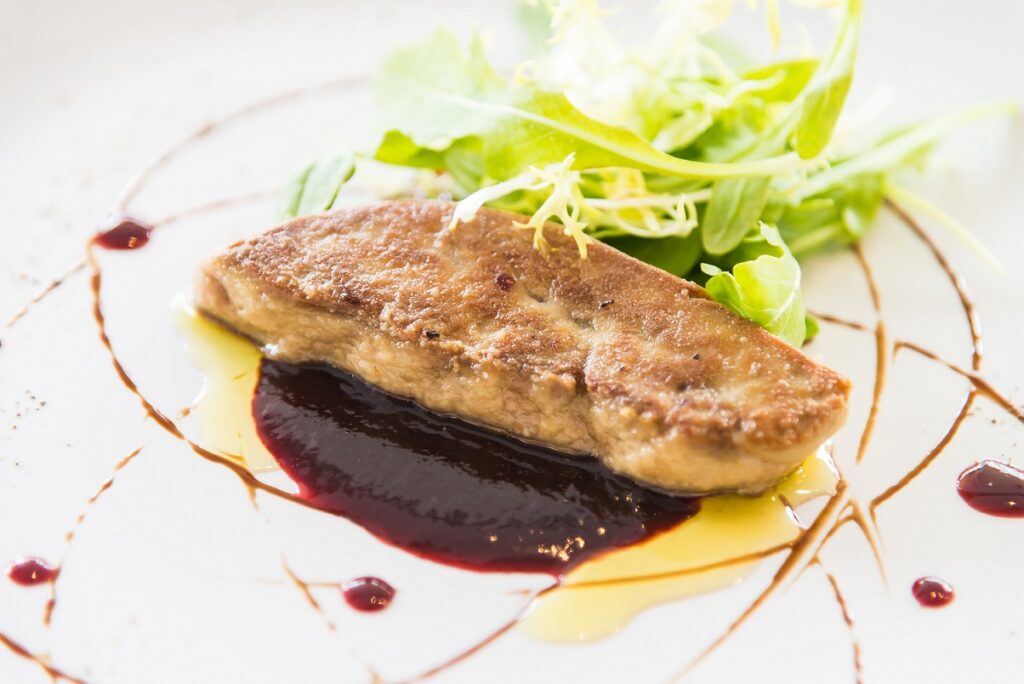
By James Wilson, Avg Read Time: Approx. 7mins

Gourmet Ingredients:
Gourmet ingredients are typically defined as high-quality and often rare or exotic ingredients that are used in cooking to create unique and sophisticated dishes. These ingredients are often associated with high-end cuisine and are commonly used in fine dining restaurants.
Examples of gourmet ingredients include truffles, foie gras, caviar, Kobe beef, and artisanal cheeses. These ingredients are usually expensive and are sourced from specific regions or producers known for their exceptional quality. They are often used in small quantities to enhance the flavor and presentation of a dish.
Gourmet ingredients are a staple in high-end cuisine because they allow chefs to create dishes that are not only delicious but also visually stunning. These ingredients are often the centerpiece of a dish and can elevate a meal to a memorable culinary experience.
Additionally, the use of gourmet ingredients can also indicate a certain level of skill and creativity on the part of the chef. It takes a skilled chef to know how to properly prepare and use these ingredients to create a dish that is both unique and delicious.
Overall, gourmet ingredients are an essential component of high-end cuisine, allowing chefs to create dishes that are both delicious and visually stunning while demonstrating their skill and creativity in the kitchen.
Truffles:

Truffles are a type of edible fungi that grow underground in specific regions around the world. They belong to the genus Tuber, and there are many different species of truffles, each with its own unique flavor and aroma. The most highly prized varieties are the black truffle (Tuber melanosporum) and the white truffle (Tuber magnatum).
Black truffles are found primarily in France and Italy, while white truffles are found primarily in Italy. They are highly valued for their strong, earthy flavor and pungent aroma, which can be detected even in very small quantities.
Truffles are used extensively in gourmet cooking and are a popular ingredient in high-end cuisine. They are often shaved or grated over dishes such as pasta, risotto, and scrambled eggs, adding a unique and luxurious flavor to these dishes. Truffle oil is also a popular ingredient, made by infusing oil with truffle essence.
In addition to their culinary uses, truffles are also prized for their supposed medicinal properties. They have been used for centuries in traditional medicine to treat a variety of ailments, including respiratory problems and digestive issues.
Truffles are considered a luxury ingredient and can be quite expensive, with prices ranging from a few hundred dollars to several thousand dollars per pound depending on the species and quality. Because they are difficult to cultivate and must be foraged by hand, truffles are relatively rare, and their availability can be unpredictable, making them even more valuable and sought after.
Types of Truffles With Respect to Their Taste, Aroma and Cost:
There are many different types of truffles, each with its own unique flavor, aroma, and cost. Some of the most commonly known truffles are:
- Black Truffle (Tuber melanosporum): Also known as the “Périgord truffle,” this is the most prized and expensive type of truffle. It is found primarily in France and has a strong, earthy flavor and a pungent aroma. Black truffles are used in a wide range of dishes, from sauces to pasta to risotto.
- White Truffle (Tuber magnatum): Also known as the “Alba truffle,” this type of truffle is found primarily in Italy. It has a unique, musky aroma and a delicate, subtle flavor that is often described as slightly garlicky. White truffles are particularly prized for their unique flavor and are often shaved over dishes like pasta, eggs, and meat.
- Burgundy Truffle (Tuber uncinatum): This truffle is found primarily in France and has a less intense flavor than black truffles. It has a slightly nutty taste and a delicate, earthy aroma. Burgundy truffles are often used in dishes like pasta, soup, and salad.
- Summer Truffle (Tuber aestivum): This truffle is found in various parts of Europe, including Italy, France, and Spain. It has a milder flavor and aroma than black and white truffles and is often used as a more affordable alternative. Summer truffles are often used in sauces, omelets, and risotto.
- Oregon Truffle (Tuber gibbosum): This truffle is found in the Pacific Northwest region of the United States. It has a subtle, earthy flavor and a mild aroma. Oregon truffles are often used in dishes like pasta, pizza, and salad.
In terms of cost, black and white truffles are the most expensive, with prices ranging from a few hundred dollars to several thousand dollars per pound depending on the quality and availability. Burgundy truffles and summer truffles are typically less expensive than black and white truffles. Oregon truffles are the most affordable, with prices ranging from $20 to $40 per ounce.
Foie Gras:

Foie gras is a luxury food product made from the liver of ducks or geese that have been force-fed to fatten their livers. The practice of force-feeding, known as gavage, dates back to ancient Egypt, where it was used to produce a delicacy called “muraena.” The Romans also practiced gavage, and the method was used in medieval Europe to produce fattened livers for the tables of the wealthy.
The modern production of foie gras began in the late 18th century in France, where it remains a highly prized delicacy today. The French town of Strasbourg is particularly famous for its foie gras, which is made from the liver of geese that have been force-fed for several weeks before being slaughtered.
To produce foie gras, geese or ducks are typically force-fed a mixture of corn and fat, either through a feeding tube or by hand, several times a day for several weeks. This process causes the liver to enlarge and become fatty, resulting in the distinctive rich, buttery flavor and smooth texture of foie gras.
After the force-feeding period is complete, the birds are slaughtered and the liver is removed and processed into foie gras. Foie gras is typically served in slices or pâté form and is often accompanied by fruit compotes, bread, or crackers.
The production of foie gras has been controversial due to concerns about animal welfare, with animal rights groups arguing that the practice of force-feeding is cruel and inhumane. Some countries, including the United Kingdom and Germany, have banned the production of foie gras, while others, such as France, continue to produce and consume it.
Uses of Foie Gras:
Foie gras is a prized ingredient in French cuisine and is used in a variety of traditional and contemporary dishes. In traditional French cuisine, foie gras is often served as a standalone dish or used as a luxurious ingredient in dishes like terrines, pâtés, and sauces. Some popular French dishes that incorporate foie gras include foie gras au torchon, foie gras terrine, and seared foie gras with balsamic reduction.
In contemporary gourmet cuisine, foie gras is used in a variety of creative and innovative ways. Chefs may incorporate foie gras into dishes like risotto, sushi, and even ice cream. Some examples of contemporary gourmet dishes featuring foie gras include foie gras stuffed quail, foie gras and truffle ravioli, and foie gras and chocolate truffles.
Foie gras is also commonly paired with sweet and savory ingredients to balance its rich, buttery flavor. It pairs well with fruits like figs, apples, and grapes, as well as savory ingredients like mushrooms and herbs. Foie gras is often served with crusty bread or crackers, and it can also be used to top crostini or as a garnish for soups and salads.
While foie gras is often associated with high-end, gourmet cuisine, it has also become more accessible in recent years, with many restaurants offering it as a menu item. However, due to concerns about animal welfare, some restaurants and chefs have chosen not to serve foie gras or to use alternative methods of production, such as “ethical foie gras,” which uses a more humane feeding method.
Some Other Gourmet Ingredients:
Caviar, saffron, and wagyu beef are all considered high-end gourmet ingredients that are prized for their unique flavor, texture, and rarity. Here is a brief overview of each ingredient and how it is commonly used in cuisine:
- Caviar: Caviar is the eggs (roe) of the sturgeon fish and is typically sourced from the Caspian and Black Sea regions. It is highly prized for its delicate flavor and smooth, creamy texture. Caviar is commonly served as a garnish or accompaniment to high-end dishes, such as seafood or meat dishes, and is often paired with Champagne or other sparkling wines. It can also be used to add a touch of luxury to simple dishes, such as scrambled eggs or baked potatoes.
- Saffron: Saffron is a spice derived from the dried stigmas of the crocus flower. It is one of the most expensive spices in the world due to the labor-intensive process of harvesting and processing the delicate stigmas. Saffron has a distinctive flavor and aroma, with notes of honey, hay, and floral tones. It is commonly used in Middle Eastern, Mediterranean, and Indian cuisine to add flavor and color to dishes such as paella, risotto, and biryani. It is also used in sweet dishes like ice cream and cakes.
- Wagyu beef: Wagyu beef is a highly marbled beef that comes from several Japanese cattle breeds. It is prized for its rich, buttery flavor and melt-in-your-mouth texture. Wagyu beef is commonly served as a steak, either on its own or as part of a larger dish, and is often accompanied by simple sides to allow the flavor of the beef to shine through. It is also used in high-end dishes like Wagyu beef carpaccio or Wagyu beef tartare.
Caviar, saffron, and wagyu beef are just a few examples of high-end gourmet ingredients that are used in cuisine to add flavor, texture, and luxury to dishes. While these ingredients are often associated with high-end dining, they can also be used in more accessible ways to add a touch of luxury to everyday dishes.
Gourmet Ingredient Trends:
The history of gourmet food is very rich from its origins in ancient times to its current status as a cornerstone of culinary culture. In recent years, there has been a growing trend towards sustainable and ethical sourcing of gourmet ingredients. Consumers are becoming more conscious of the impact their food choices have on the environment and animal welfare, and are seeking out ingredients that are sourced in a responsible and sustainable manner.
One example of this trend is the increasing popularity of sustainably sourced seafood, such as wild-caught salmon and responsibly farmed shrimp. Sustainable seafood certification programs, such as the Marine Stewardship Council and Aquaculture Stewardship Council, have become more common, and many restaurants and retailers are now highlighting their use of sustainably sourced seafood.
Another trend is the focus on locally sourced and seasonal ingredients. Locally sourced ingredients are often fresher and more flavorful than those that have been shipped from far away, and they also support local farmers and reduce the carbon footprint of food transportation. Many chefs and restaurants are now highlighting their use of locally sourced and seasonal ingredients on their menus.
Finally, there is also a growing interest in alternative proteins, such as plant-based meat substitutes and insect protein. These ingredients offer a more sustainable and ethical alternative to traditional meat sources, which are often associated with negative environmental and animal welfare impacts.
In conclusion, the trend towards sustainable and ethical sourcing of gourmet ingredients is likely to continue in the coming years, as consumers become increasingly conscious of their food choices and seek out ingredients that align with their values. As this trend evolves, we may see new certifications and labeling programs emerge to help consumers make informed choices, and we may also see an increased focus on alternative protein sources and locally sourced and seasonal ingredients.
Some Gourmet Recipes Having Truffles and Foie Gras:
Here are a few gourmet recipes that incorporate high-end ingredients such as truffles, foie gras, and more, along with suggestions on where to source the ingredients:
- Truffle Risotto
- Ingredients: Arborio rice, chicken or vegetable broth, white truffle oil, grated parmesan cheese, truffle butter, salt, and pepper
- Instructions: Cook the Arborio rice with the broth and a generous amount of white truffle oil. Once the rice is cooked, stir in the grated parmesan cheese, truffle butter, and season with salt and pepper to taste. Garnish with shaved truffles for extra flavor and texture.
- Where to source the ingredients: Fresh truffles can be sourced from specialty gourmet stores or online retailers like Urbani Truffles. White truffle oil and truffle butter can also be found at gourmet stores or online retailers like Williams-Sonoma or Amazon.
- Foie Gras Torchon
- Ingredients: Foie gras, brandy or cognac, salt, sugar, black pepper, thyme, and heavy cream
- Instructions: Mix the foie gras with brandy or cognac, salt, sugar, black pepper, and thyme. Blend the mixture until smooth and then stir in the heavy cream. Wrap the mixture in cheesecloth and refrigerate overnight. Serve with toasted brioche and a fig compote.
- Where to source the ingredients: Fresh foie gras can be sourced from specialty gourmet stores or online retailers like D’Artagnan. Brandy or cognac can be found at liquor stores or online retailers like Drizly.
- Lobster with Black Truffle Sauce
- Ingredients: Lobster tails, black truffle sauce, white wine, heavy cream, garlic, shallots, butter, salt, and pepper
- Instructions: Cook the lobster tails until they are pink and tender. In a separate pan, sauté garlic and shallots in butter until fragrant. Add white wine and cook until the liquid has reduced by half. Stir in heavy cream and black truffle sauce and simmer for a few minutes until the sauce has thickened. Season with salt and pepper to taste. Serve the lobster tails with the black truffle sauce poured over them.
- Where to source the ingredients: Fresh lobster tails can be sourced from seafood markets or online retailers like LobsterAnywhere. Black truffle sauce can be found at gourmet stores or online retailers like Gourmet Food Store.
Conclusion:
In conclusion, exploring gourmet ingredients can be a fascinating and delicious experience, and can elevate any dish to a new level. Truffles and foie gras are just a few examples of high-end ingredients that can add complexity and depth to a variety of recipes.
Sourcing these ingredients may require a bit of effort and investment, but the end result is always worth it. Whether you’re cooking for a special occasion or just looking to treat yourself, incorporating gourmet ingredients into your meals is sure to impress and delight your taste buds. So why not try experimenting with some truffles, foie gras, or other high-end ingredients and take your cooking to the next level?

